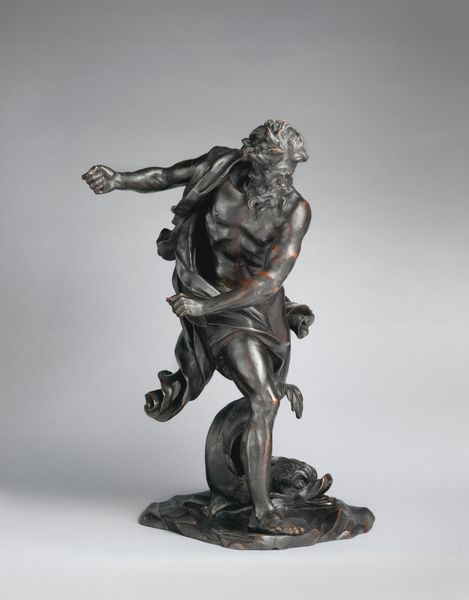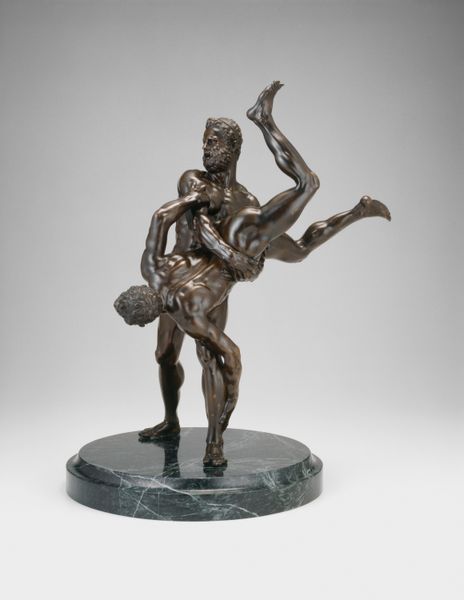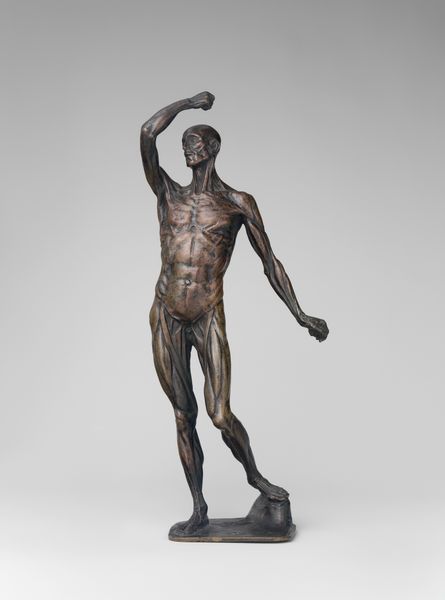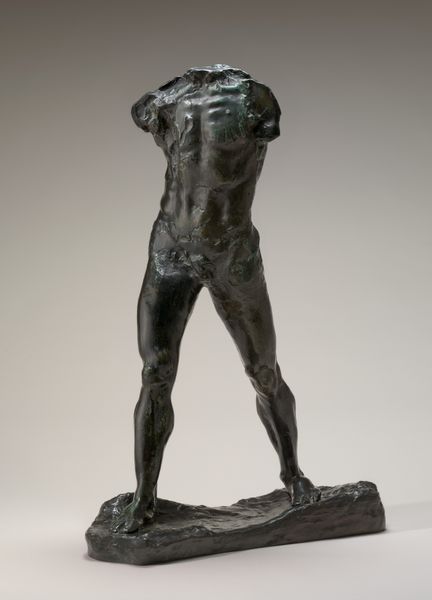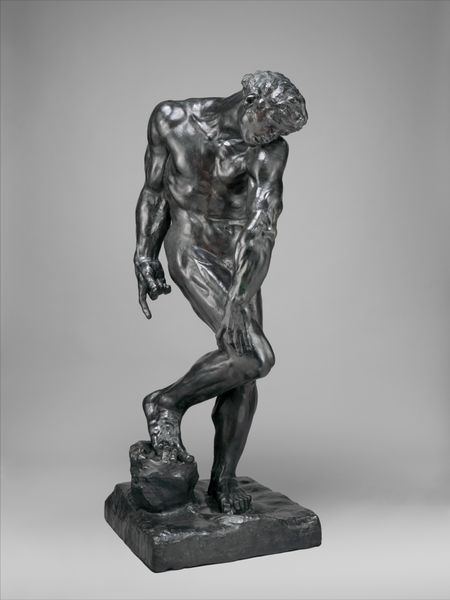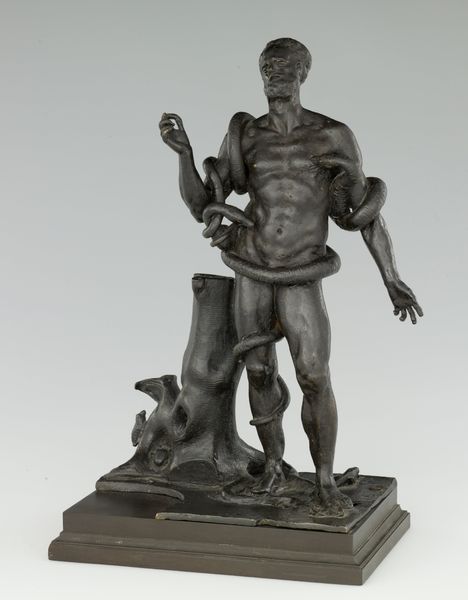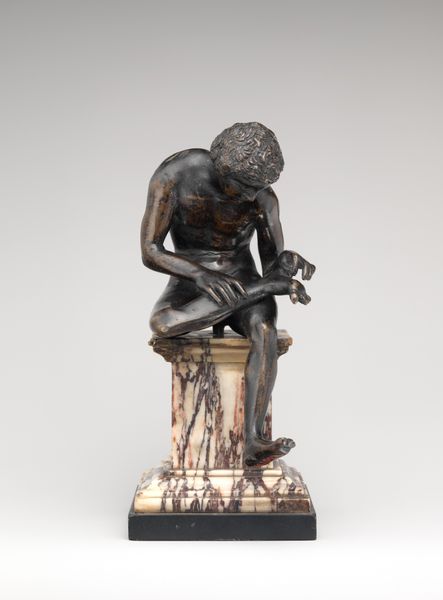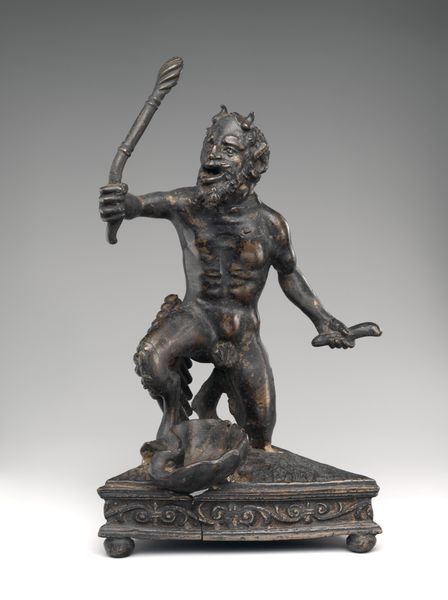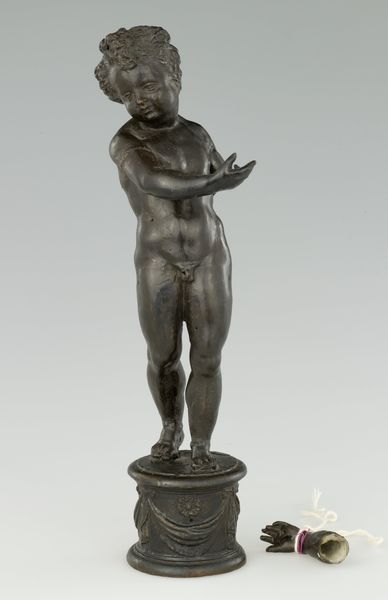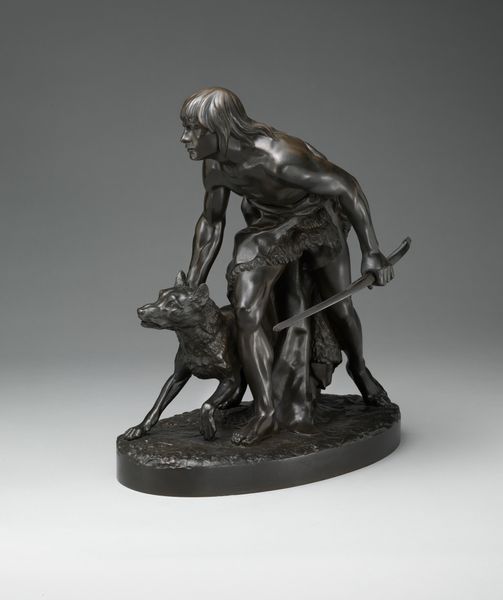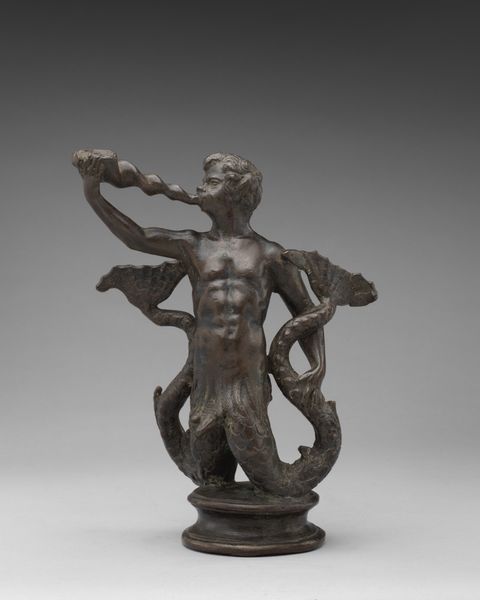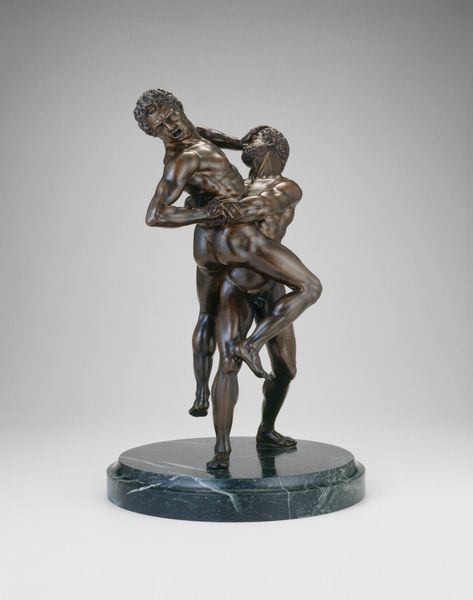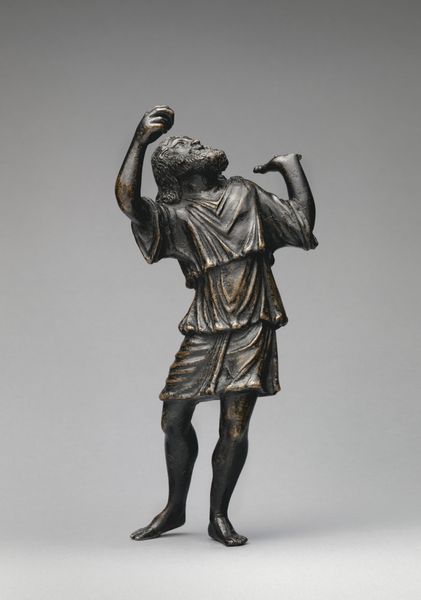
bronze, sculpture
#
portrait
#
sculpture
#
bronze
#
sculptural image
#
figuration
#
sculpting
#
sculpture
#
men
#
history-painting
#
realism
#
statue
Dimensions: 19 1/2 x 14 3/4 x 9 3/4 in. (49.5 x 37.5 x 24.8 cm)
Copyright: Public Domain
Curator: Let’s turn our attention to "The Freedman," a bronze sculpture created by John Quincy Adams Ward between 1863 and 1891. Editor: Immediately, I'm struck by the tension embodied in the sculpture. The figure's musculature suggests strength, yet there's a profound sense of weariness conveyed through the slump of his shoulders and the angle of his head. The materiality—the polished bronze—almost vibrates with contained energy. Curator: Ward created this powerful figural representation to depict emancipation during the Civil War era. His realistic style places an emphasis on conveying the struggles of formerly enslaved African Americans. Editor: Precisely. Consider the composition: the figure is emerging from what looks like a tree stump, a potent symbol of rootedness and potential for new growth. Notice how the artist renders the broken shackles at his wrists, visually connecting oppression to nascent freedom. Semiotically, the body itself becomes a text, narrating resilience through form. Curator: Absolutely. His gaze, tilted downwards, hints at a complex mixture of sorrow and hope—reflecting the transition from subjugation toward autonomy. One can interpret it in dialogue with theories on intersectionality; race and social status creating specific experiences of hardship and empowerment. The legacy of the Jim Crow south is unavoidable when assessing this work. Editor: The surface also speaks. Look at the texture, the smooth planes contrasting sharply with the rougher areas around the base. It subtly emphasizes a shift; past roughness giving way to a smoother, redefined existence. There is also a diagonal line formed by the figure's leaning posture which establishes imbalance that speaks to the challenges in overcoming the burdens of history. Curator: Indeed. It provokes reflection on enduring social injustices even beyond its immediate historical context. Editor: By engaging with the visual elements, the lines and bronze materiality, this artwork encourages us to decode the silent narratives residing within. Curator: By bringing critical consciousness and diverse cultural theory into this work, its message and context comes alive.
Comments
No comments
Be the first to comment and join the conversation on the ultimate creative platform.

